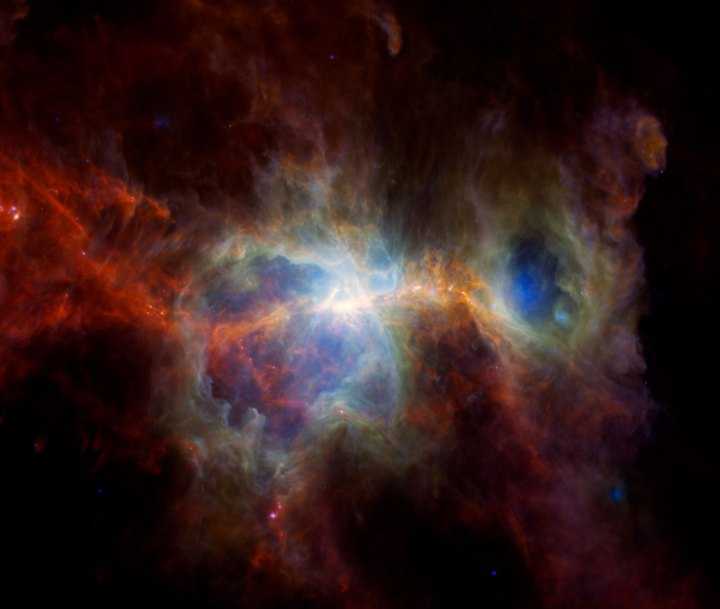Orion is one of the most recognizable constellations in the night sky, and within the constellation is a beautiful nebula that is a busy region of star formation. A stunning image of the Orion nebula was recently released by NASA, showing the delicate structures of dust and gas that make up this stellar nursery.
The structure of the nebula is formed by large stars that give off radiation that affects the clouds of dust. “Two enormous caverns that dominate the cloud were carved out by giant stars (unseen in this image) that can release up to a million times more light than our sun,” NASA explains. “All that radiation breaks apart dust grains there, helping to create the pair of cavities. Much of the remaining dust is swept away by winds from stars or when the stars die explosive deaths as supernovae.”

The image combines data from the now-retired Spitzer Space Telescope and the current Wide-Field Infrared Survey Explorer (WISE), now known as NEOWISE. Spitzer, which retired in 2020, looked in the infrared wavelength to peer through dust and see the interior structure of objects like nebulae. As for NEOWISE, the telescope now watches the sky for near-Earth objects like asteroids, but it also produces all-sky maps showing how the sky is changing over time.
Additional data for the image came from the European Space Agency’s now-retired Herschel Space Telescope, which added data on the far-infrared and microwave wavelengths, which is shown in red and green. In the image of the Orion nebula, areas of blue light represent regions of warm dust, while areas of red represent cooler dust. Red areas are as cold as minus 440 Fahrenheit (minus 260 Celsius), and tend to be around the outer edge of the nebula, while in the center of the nebula, the dust is hotter due to stars forming there.
Stars will continue to form in the region as the dust and gas clumps together to form knots, which attract more material until they eventually collapse under gravity to form a the heart of a new star.



